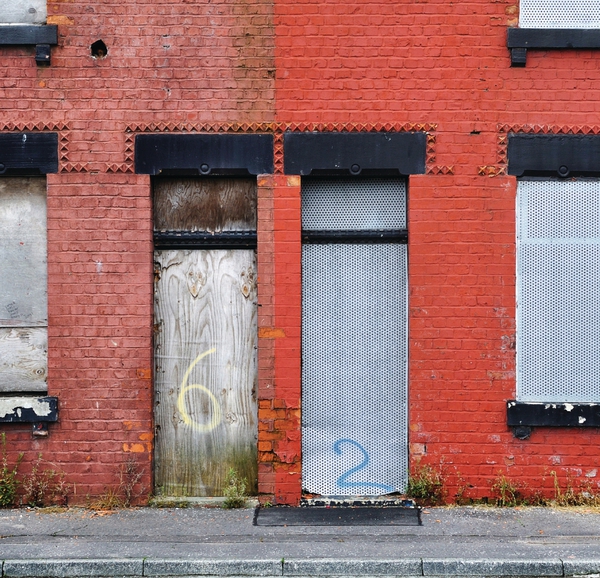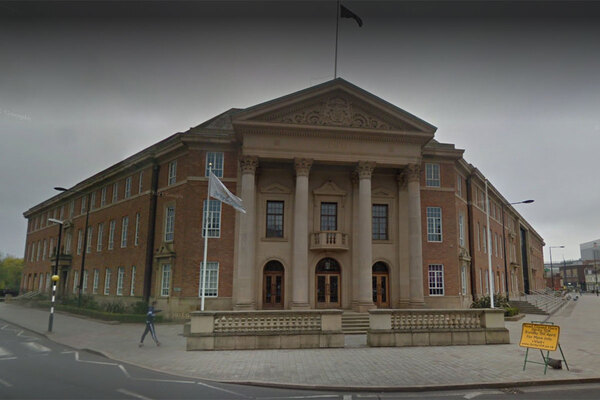You are viewing 1 of your 1 free articles
Building for Scotland
Scottish councils are building homes, and lots of them. Emily Twinch investigates how they’re doing it
Video:
features code

Council housebuilding has been making a comeback. Construction may not be quite back to the glory days of post-war Britain, but city halls across the UK have been donning hard hats and finding the keys for their JCBs.
And Scottish councils have been leading the way, building 2,297 affordable homes in the last two financial years, according to Scottish Government figures.
Video:
Ad slot
Although English councils have built more in total in the past two financial years – completing 5,710 affordable homes, according to Department for Communities and Local Government (DCLG) figures – given Scotland’s size and population, the country’s local authorities have still performed more impressively per head of population.
Twenty-six of Scotland’s 32 stock-owning councils have developed in the past few years; a greater proportion than in England, where 55 of the 167 that own stock built homes in the last financial year.
Video:
councils building
The Scottish housing minister, Margaret Burgess, told Inside Housing that expanding council housebuilding was “absolutely important” for her government to achieve the right mix of tenures.
“We support councils [to build] in any way we can,” she says. “Social housing is critical so people can afford the rent.”
Combined effort
The political climate suggests that the trend is likely to continue. The Scottish National Party (SNP) has pledged to build 50,000 affordable homes for Scotland in the next parliament if it wins the elections in May, of which it wants 35,000 to be council-built homes.
Should Labour manage to wrest power back from the opposition, it has promised to build 60,000 more affordable homes.
But how are individual Scottish councils achieving success?
Five councils building the most in 2014/15 (completions)
| Falkirk | 160 |
| West Lothian | 146 |
| Highland | 139 |
| North Ayrshire | 137 |
| Edinburgh | 94 |
Edinburgh Council has big plans to support homebuilding – as Inside Housing reveals in detail on pages 22-25. But other councils are already putting bricks to mortar.
Highland Council completed 139 homes last financial year, making it one of the biggest builders of any local authority in Scotland, according to Scottish Government figures.
Allan Maguire, head of property partnerships at Highland Council, says it builds a large number of homes by working with housing associations and the Scottish Government.
“It’s a huge task to identify sites, design them, build homes and ensure there is adequate infrastructure and services in place to ensure that the new homes have as much of a positive impact as possible.”
George Paul, executive councillor for services to the community, West Lothian Council
“We work closely with the Scottish Government regional department. It’s a strong regional office,” he says.
It recently started construction of 13 homes on the site of a former medical facility. This was land it got through the Scottish Government’s policy of giving a council first priority to buy public land for development.
Falkirk Council built the most homes of any Scottish council in the last financial year, completing 160.
The council has benefited from having plenty of its own land to build on, which is cheaper than buying plots, says Kenny Gillespie, property and asset manager for corporate and housing service at Falkirk. “Ultimately the land will dry up,” he says. “But obviously you look at your own land first.”
Challenges for councils
In England councils often say they lack the skills to immediately take up the new impetus to build homes.
But Mr Maguire said it is not a problem for his council as “we have lots of staff that used to work for housing associations” that brought with them experience of building.
George Paul, executive councillor for services to the community at West Lothian Council – which was the top Scottish Council in 2013/14, when it completed 343 homes – recognises the challenges for councils building homes.
“It’s a huge task to identify sites, design them, build homes and ensure there is adequate infrastructure and services in place to ensure that the new homes have as much of a positive impact as possible,” he states.
Mr Paul explains all the homes his council builds are for social rent and are financed with a mixture of borrowing, government grant and developer contributions.
He adds: “We are satisfied that we have sufficiently skilled staffing resources to deliver the project. What is becoming an issue is the availability of labour to build the homes.”
Of course, one route for Scottish councils is to set up partnership deals with housing associations.
Aberdeen Council did not built any homes in the last two financial years (2013/15). But Neil Cooney, Aberdeen Council’s convener of communities, housing and infrastructure, explains: “In October last year, we agreed a £300m joint venture with Places for People Group to deliver a step change in the supply of affordable homes in the city.
“We have committed to building more than 2,400 properties by 2019 through this agreement, which will help to stimulate the local economy.”
The council is also planning to build 179 homes through its own housebuilding programme, with £23m from its 2016/17 budget.
It might seem like Scottish councils are flush with resources for housebuilding compared to their English counterparts, but Anil Gupta, chief officer for communities at the Convention of Scottish Local Authorities, says it is still unclear how building will be funded in future.
Especially considering the SNP’s 50,000-home pledge, it could be financially challenging to increase production “considering how strapped for cash we are”, says Mr Gupta.
Yet given the political will behind council house construction, it looks like Scottish councils will continue to pave the way.
A policy apart
English councils have a shopping list of ‘asks’ for policy changes which would help them unleash their building power (whether it’s removing caps on borrowing or the Right to Buy, or rules about which grants can be used for what). But Scottish councils have, as it were, already done the shop – and are enjoying the proceeds.
Scottish councils aren’t subject to the same sort of caps on their Housing Revenue Account (HRA) borrowing, while the Right to Buy is being phased out.
They enjoy priority access to public land. And, in January, the Scottish Government announced it was increasing the grant rate for councils to build social homes from between £46,000 and £50,000 per unit, to £57,000 and £59,000.
In England, the Homes and Communities Agency (HCA) does not set a grant rate per unit, but decides according to each scheme. However, the grant rate given per unit does tend to be lower than in Scotland.
Tony Cain, policy manager for Scotland’s Association of Local Authority Chief Housing Officers, says: “The attitude is totally different – we are going in different directions.
“We are being actively encouraged to build social housing and in England they are actively being discouraged.”
Scottish councils still have to raise money to build homes – it costs about £130,000 to build a social rented council home in Scotland. So they still need to raise money after grant. But local authorities in Scotland are given more freedom to raise the cash they need. They can set their own rents and manage their own debt levels.
“There’s more financial capacity with the HRA in Scotland,” Mr Cain says.
He suggests: “Those moving towards larger programmes are those who have low historic debt so they can add to it without a big risk to rent.”
Scottish councils are also able to charge up to 100% council tax on long-term empty second homes, which can be lucrative for the several areas where second homes are common. This money can be ploughed
back into new housing.
Councils can also sometimes have first dibs on public land for building. The Scottish Public Finance Manual requires land to be offered to Scottish Government bodies before being offered more widely, usually on the open market.
A Scottish Government spokesperson explains: “Where we are aware of a council having an interest in a particular site, there are circumstances in which it may be appropriate to deal directly with the council before offering the property to any other party.”
Another major factor affecting councils’ appetite to build is the Right to Buy, which will end in Scotland on 1 August this year.
Mr Cain says the end of Right to Buy in Scotland “changes the whole game”. Councils have been much more interested in building since they knew they were going to be able to keep what they develop, he explains.
“Councils have been more interested in building knowing they are not going to be left with a ragtag of stock,” agrees Anil Gupta, chief officer for communities at local authority umbrella group, the Convention of Scottish Local Authorities.
If you look at the statistics for local authority completions, it does show a notable drop of homes completed by councils in the UK in the years after 1978 (110,170), reaching a low of 130 in 2004. The Right to Buy was introduced in 1980.











